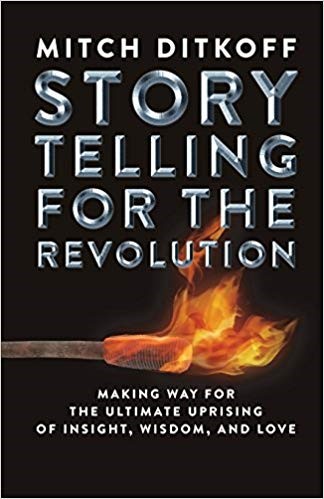23 Reasons Why Nothing Happens After a Brainstorming Session

How many times have you participated in a brainstorming session, only to be underwhelmed by the utter lack of follow up?
Unfortunately, in most businesses, this is often the norm.
Here's why:
1. The output of the session is underwhelming.
2. No one has taken the time, pre-brainstorm, to consider follow-up.
3. No criteria is established to evaluate the output.
4. No next steps are established at the end of the session.
5. No champions (i.e. process owners) are identified.
6. The champions are not really committed.
7. The champions are committed, but under-estimate the effort.
8. The ideas are too threatening to key stakeholders.
9. No one is accountable for results.
10. The project leader doesn't stay in contact with key players and "out of sight, out of mind" takes over.

11. The "steering committee" takes their hands off the wheel.
12. The next brainstorming session is scheduled too quickly.
13. The output of the session is not documented.
14. No sponsors are on board.
15. Participants' managers are not supportive of the effort
16. It takes too long to document the output of the session.
17. The output is not distributed to stakeholders in a timely way.
18. Participants and stakeholders do not read the output.
19. Bureaucracy and company politics rule the day.
20. Somebody, in the session, is disengaged and sabotages the effort.
21. Teamwork and collaboration is in short supply.
22. Small wins are not celebrated. People lose heart.
23. Participants perceive follow-up as "more work to do" instead of a great opportunity to really make a difference.
What else should be on this list?
Excerpted from Conducting Genius
Posted by Mitch Ditkoff at December 4, 2010 08:04 AM
Comments
24. participants have no power or control over what will be done with the ideas
25. participants were not volunteers
26. participants have very little to no training in idea generation
27. facilitator is inexperienced or poorly trained.
28. problem is not clearly defined.
Posted by: Robert_Alan Black ![[TypeKey Profile Page]](http://www.ideachampions.com/weblogs/nav-commenters.gif) at May 21, 2010 09:28 AM
at May 21, 2010 09:28 AM
This may have been implied, but it comes down to one word in front of many bullets... fear. Fear the project will fail. Fear the project will be too much work. Fear the meeting will be unproductive. Fear no one will follow through. And on, and on, and on...
Posted by: BeBizzy ![[TypeKey Profile Page]](http://www.ideachampions.com/weblogs/nav-commenters.gif) at May 21, 2010 10:10 AM
at May 21, 2010 10:10 AM
I believe that the problem is in the planning and purpose, or should I say lack of planning and purpose, of the creative effort. If the organization is serious in its innovation efforts, then the follow up will be taken seriously and given appropriate resources. If brainstorming is just a rainy day activity to generate something that can be used to show we are being creative, then every point listed above is true. If that list above is considered by the entire organization prior to the session happening, then they can all be avoided. I know because I have seen it happen...
Posted by: Julius Nagy ![[TypeKey Profile Page]](http://www.ideachampions.com/weblogs/nav-commenters.gif) at May 21, 2010 11:09 AM
at May 21, 2010 11:09 AM
Very engaging topic. Reminds me of a greater question, one that encapsulates the subject and represents an exciting paradigm shift for corporate ecosystems around the world... cultural transformation. This seems to be a systemic issue throughout the world today at micro and macro levels. Businesses and the leaders that govern them are in need of new business models that facilitate environments which refresh the tone at the top and provide systems that foster common sense principles and innovation as referenced and implied in this illuminating work. Here here to true believers of noble and socially responsible forums as provided herein.
Posted by: colin tong ![[TypeKey Profile Page]](http://www.ideachampions.com/weblogs/nav-commenters.gif) at May 22, 2010 02:05 AM
at May 22, 2010 02:05 AM
2x Management has a preferred solution and only provides resources for that effort. Participants either know this and are demoralized with a sense of doom, don't know this and become demoralized, or apply maximum "brown-nose" effort, so sabotaging real brainstorming, to execute the preferred solution.
Posted by: Guy Jordan ![[TypeKey Profile Page]](http://www.ideachampions.com/weblogs/nav-commenters.gif) at May 22, 2010 10:37 AM
at May 22, 2010 10:37 AM
Great list and discussion. Brainstorming is a creative process that is strengthened by a move to the right hemisphere. This requires real facilitation. I'd also add that it is iterative. Big opportunities open up when small ideas have a chance to bubble up and there's no telling where, when or from who they will originate. This requires management commitment, planning, facilitation, inclusion, analysis. Repeat.
Posted by: Pete ![[TypeKey Profile Page]](http://www.ideachampions.com/weblogs/nav-commenters.gif) at May 24, 2010 11:30 AM
at May 24, 2010 11:30 AM
Interesting. Just finished a two day staff retreat....wish I had this to share with my colleagues. Hopefully it isn't too late for this meeting but I know I can definitely use it going forward.
Posted by: www.facebook.com/profile.php?id=803420382 ![[TypeKey Profile Page]](http://www.ideachampions.com/weblogs/nav-commenters.gif) at May 26, 2010 09:17 PM
at May 26, 2010 09:17 PM
Great article! Thanks for sharing!
Most critical in the list: 5. No champions (i.e. process owners) are identified.
Posted by: Fame Foundry ![[TypeKey Profile Page]](http://www.ideachampions.com/weblogs/nav-commenters.gif) at May 27, 2010 01:30 AM
at May 27, 2010 01:30 AM
I've found it helpful to schedule an execution meeting separate from the brainstorming session. Basically a vetting and prioritization phase. Helps keep the free flow of ideas during brainstorming... while ensuring the right ideas receive follow-through.
Good food for thought! Thanks.
Posted by: Andrew McFarland ![[TypeKey Profile Page]](http://www.ideachampions.com/weblogs/nav-commenters.gif) at June 3, 2010 09:31 AM
at June 3, 2010 09:31 AM
The reason most businesses exist is to create value, for customers, shareholders, staff, community etc. So, the real issue here is about how brainstorming sessions add value to the business and its constituents.
Sir Ken Robinson (Out of Our Minds 2001) defines creativity as the creation of something new and unique that adds value. When he talks about new and unique he means unique for the individual, group, organisation or society at large.
Well, brainstorming is just one of a wide variety of methods for generating new and unique ideas that have the potential to add value.
However, the creation of value requires other dimensions of the creative process to work in a cybernetic fashion supporting the translation of the many ideas generated during a brainstorming session into a few well-tested and well-implemented projects, products or processes that ultimately create tangible benefit for someone the business serves.
Koberg and Bagnall's Universal Traveler Model (1981) outlined a very useful structured creative process to enable this. There are many other similar structures but ultimately they all follow the same sort of architecture and sequence to some degree.
Accept the situation (as a challenge)
Analyze (to discover the "world of the problem")
Define (the main issues and goals)
Ideate (to generate options – brainstorming is just one method to use to do this)
Select (to choose among options)
Implement (to give physical form to the idea)
Evaluate (to review and plan again)
While brainstorming can be used as a facilitation tool at each stage of this process, by in large people relate brainstorming to the IDEATION phase. Brainstorming in this context is used to generate new ideas.
Seen from this perspective there’s much to be done both before and after a brainstorming session and using Koberg and Bagnall's architecture we can begin to group and define some of the key reasons brainstorming session fail.
Before the event they fail because…
• The organisation, the group or individuals in the group have not accepted the situation as something in need of improvement and there is no real commitment to the creative process.
• The facilitator and the group have not fully analyzed the world of the problem/opportunity so the brainstorming is not sufficiently well informed, outcomes are naive.
• The organisation, facilitator and the group have not defined the main issues to be resolved, so the brainstorming session is not sufficiently focused.
During the session…
• Ideas are not well selected against the original goals of the process.
After the session…
• Nothing happens to experiment with and give tangible form to the idea.
• Without tangible form there is nothing concrete with which to test and evaluate the contribution the idea will make to the business.
While Koberg and Bagnall set out the process in linear fashion, in reality, innovation functions more as an ongoing series of cybernetic, prototyping experiments in which problems/opportunities are identified, selected, analyzed, defined, ideated, solutions selected, implemented then tested and evaluated, re-thought, re-ideated, re-defined etc.
Ongoing prototyping and iterative improvement based on real time feedback are essential.
The total process involves a dynamic interplay of logic, analogic and action; convergent thinking, divergent thinking, and real world experimentation; head, heart and hand. Throughout the process the team constantly shifts perspectives and modes of creative approach.
At a macro level for this larger innovation process to function well there needs the support of…
• BUSIENSS PHILOSOPHY - formal, visible commitment and support for innovation and creativity at all levels of the business particularly senior executives, finance officers and risk managers.
• CULTURE - a propensity for risk, new ideas, divergent approaches and a culture of 'yes and' rather than 'no but' – a single negative, risk averse but influential leader; executive, section leader, social leader or union leader, can kill the creative culture.
• PROCESS - making brainstorming just part of a much wider and well defined cybernetic innovation process of planned problem/opportunity identification, acceptance, analysis, definition, ideation, selection, prototyping, implementation and experimentation.
In my experience the main reason that 'brainstorming' fails is that too many people make the mistake of thinking that innovation and creativity are all about brainstorming rather than understanding and committing to transforming the wider philosophy, context and process in which brainstorming takes place.
Ultimately brainstorming is a small part of the bigger picture of adding value and it requires a big picture approach to make it work.
Posted by: Paul Macklin ![[TypeKey Profile Page]](http://www.ideachampions.com/weblogs/nav-commenters.gif) at December 4, 2010 04:38 PM
at December 4, 2010 04:38 PM
Post a comment
Thanks for signing in, . Now you can comment. (sign out)
(If you haven't left a comment here before, you may need to be approved by the site owner before your comment will appear. Until then, it won't appear on the entry. Thanks for waiting.)













